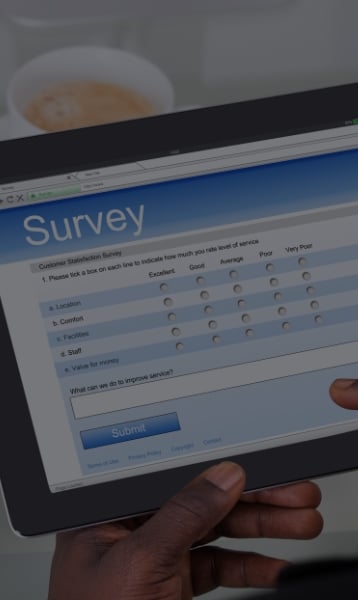This interactive portal improves the analytic experience so you can easily interact with data.
Considering Equity and Employee Needs in Benefit Design Strategy


Jennifer Santisi
Over the past two years, employers have had to change how they think about benefit strategies with special attention to attraction and retention. The pandemic highlighted gaps in what was being offered versus what employees want, including flexibility, mental health coverage, caregiving, and empathy (employees care about how they’re treated and what support they have).
IBI surveyed employers across the US with a variety of locations, industries, and company sizes. Employers reported on the demographics of their workforces, which were 48% female, 47% under 40 years old, and 63% had an associates degree or higher.
Forty percent of the companies surveyed made changes to benefit plans since the pandemic started, and 65% stated employees’ preferences considered in benefit changes, shared IBI Research Associate Sera-Leigh Ghouralal. Among those employers that are seeking employee input, they utilize surveys, focus groups, department meetings and informal conversations with supervisors. Eighty percent of companies stated that they seek feedback from employees regarding their satisfaction of newly implemented benefits. Employers added remote work and behavioral health programs during pandemic, expanded health education and PTO, and removed care benefits.
“Whenever we’re looking at our policies, we look at our plans now from an equity lens, no matter what program or plan we’re looking at or how long it’s been in place,” explained a Human Resources Director at a large American retailer. “Now that we take equity into account, it really resonated with our population.”
The HR Director said that the retailer is rethinking certain policies and made changes to the waiting period for short-term disability. “We’re looking at our policies and saying what’s glaringly obvious that’s not equitable. We’ll be offering short-term disability on day one of employment next year. It’s the definition of equity.”
The retailer also opened clinics for low-cost care, even for employees that were not on their health insurance plan. If income was an uncertainty for them during the pandemic, she said the company wanted to put employees’ minds at ease on whether they get care or not.
The HR Director emphasized that training is important. “We have a great benefits package, but they may have no idea how to navigate it,” the HR Director said. The company is in the process of developing tools so that managers have a laminated one-pager on mental health programs. They’ll be able to say ‘here’s a resource, I’m not trained in that way but here’s something that can help.’ “Our managers love our benefits, but they just wish they knew how to answer their staff’s questions on the front line,” she added.
Staying in tuned with what employees want is critical. The company reintroduced live visits, which had been suspended during the pandemic. They’re now back on-site visiting distribution centers and meeting with associates one-on-one. Before removing a benefit, the HR Director emphasized that it’s important to touch base with employees—there may be an unmet need for that benefit, and employees just may not know how to access it. For example, the company was considering removing caregiving benefits, but when employees were surveyed they resoundingly said they wanted that benefit to remain in place.
To educate employees on their benefits, the company created brand new videos on each of their benefits, to drive home the key points, and are revamping orientation to simplify the process. But when things get rough, she said, employees will still seek out a person to talk things through. “If we can get them involved in wellbeing programs and have fun with their benefits, then we hope when it’s not so fun they know ‘I can chat with that person’ and get what they need,” she said.
Employees want to contribute to the conversation around benefit design. In rethinking benefits around family planning, the company went out to their community and asked if anyone has gone through surrogacy or adoption. There were quite a few people the HR Director spent over an hour with on what they went through, and what were the obstacles. It gave her a good sense of the process and what support is needed. “We heard that they wanted more time with their child after their birth,” she said. “And when we announced the redesigned benefit, we reach out to the person who shared with us first and they can celebrate that moment and they know they were part of that.”
“Maybe it’s time to get back to basics, and many employers put in many point solutions to keep their employees safe,” concluded IBI President Kelly McDevitt. “But now looking back, we have the outcomes data and need to look back to see what’s working. The baseline to start is to get back to the things that were done well before the pandemic- preventive screenings, immunizations, chronic conditions, improving barriers to care—address the things that existed before the pandemic. Maybe we need a fresh start.”
- February 2025 (1)
- December 2024 (2)
- March 2024 (1)
- January 2024 (1)
- October 2023 (3)
- September 2023 (1)
- July 2023 (1)
- May 2023 (1)
- April 2023 (1)
- February 2023 (1)
- January 2023 (1)
- December 2022 (1)
- November 2022 (1)
- October 2022 (1)
- September 2022 (1)
- August 2022 (2)
- July 2022 (1)
- June 2022 (3)
- May 2022 (2)
- April 2022 (1)
- March 2022 (2)
- February 2022 (1)
- January 2022 (1)
- December 2021 (1)
- November 2021 (1)
- October 2021 (1)
- August 2021 (1)
- July 2021 (2)
- June 2021 (1)
- May 2021 (1)
- April 2021 (1)
- February 2021 (1)
- January 2021 (3)
- August 2020 (1)
- July 2020 (3)
- May 2020 (1)
- April 2020 (4)
- March 2020 (4)
- February 2020 (1)
- January 2020 (1)
- November 2019 (2)
- July 2019 (4)
- June 2019 (3)
- May 2019 (2)
- April 2019 (2)
- March 2019 (3)
- February 2019 (7)
- January 2019 (9)
- November 2018 (6)
- October 2018 (3)
- September 2018 (3)
- August 2018 (2)
- July 2018 (4)
- March 2018 (22)
- February 2018 (1)
- October 2017 (1)
- September 2017 (1)
- August 2017 (1)
- July 2017 (1)
- June 2017 (3)
- May 2017 (2)
- April 2017 (1)
- March 2017 (29)
- February 2017 (1)
- January 2017 (1)
- December 2016 (3)
- November 2016 (2)
- October 2016 (1)
- August 2016 (3)
- May 2016 (2)
- April 2016 (8)
- February 2016 (29)
- January 2016 (1)
- December 2015 (2)
- July 2015 (4)
- June 2015 (6)
- May 2015 (1)
- April 2015 (1)
- March 2015 (22)
- February 2015 (1)
- January 2015 (1)
- December 2014 (1)
- November 2014 (1)
- October 2014 (2)
- September 2014 (1)
- August 2014 (3)
- July 2014 (2)
- June 2014 (1)
- May 2014 (2)
- April 2014 (4)
- March 2014 (8)
- February 2014 (1)
- January 2014 (1)
- December 2013 (2)
- November 2013 (2)
- October 2013 (4)
- August 2013 (1)
- July 2013 (3)
- May 2013 (13)
- March 2013 (2)
- February 2013 (9)
- January 2013 (1)
- December 2012 (1)
- November 2012 (1)
- June 2012 (1)
- May 2012 (1)
- April 2012 (1)
- August 2011 (1)
- June 2011 (3)
- May 2011 (1)
- April 2011 (2)
- March 2011 (1)
- February 2011 (2)
- November 2010 (1)
- October 2010 (1)
- June 2010 (1)
- March 2010 (1)
- January 2010 (2)
- October 2009 (1)
- July 2009 (1)
- May 2009 (2)
- March 2009 (1)
- January 2009 (1)
- November 2008 (1)
- October 2008 (2)
- September 2008 (1)
- August 2008 (1)
- June 2008 (1)
- May 2008 (1)
- April 2008 (2)
- March 2008 (1)
- February 2008 (1)
- January 2008 (2)
- December 2007 (1)
- November 2007 (1)
- October 2007 (1)
- September 2007 (1)
- August 2007 (1)
- July 2007 (1)
- June 2007 (1)
- May 2007 (2)
- March 2007 (1)
- February 2007 (1)
- January 2007 (1)
- August 2006 (1)
- June 2006 (1)
- March 2006 (1)
- May 2005 (1)
- July 2004 (1)
- 2019 (1)
- 2020 (1)
- Absence (2)
- Absence Management (4)
- Article (105)
- Behavioral Health (2)
- Benchmarking (9)
- Benefit Design (11)
- Benefits + Plan Design (26)
- Blog (72)
- Burnout (1)
- Business Performance (2)
- Business Value of Health (21)
- Cancer (3)
- Cardiovascular Disease (4)
- Care Management (1)
- Care Quality (1)
- Caregiving (3)
- Case Studies (7)
- Chronic Conditions (2)
- Communicating H&P to Business Leaders (1)
- Community Health (2)
- Comparative Effectiveness Research (1)
- Connecting HR to Operations (1)
- COVID-19 (13)
- Culture of Health (1)
- Culture of Health + Safety (29)
- Data (1)
- Data Driven Decision Making (1)
- Depression (5)
- Diabetes (5)
- Disability Leave (41)
- Disease Burden (1)
- Employer Perspectives (5)
- Engage Employees (45)
- Event Recap (2)
- Exchanges (4)
- Family + Parental Leave (8)
- FMLA (2)
- Headache (1)
- Health + Productivity Management (54)
- Health Inequities (1)
- Healthcare (2)
- Healthcare Costs (17)
- HPM Survey (3)
- IBI Agenda (2)
- IBI Presents (9)
- immunization (1)
- Industry Profile (1)
- Integrating Health Data (12)
- Invest In Health (52)
- Leave Benchmark Survey (1)
- Linking Health to Business Performance (1)
- Make The Business Case (54)
- Manage Absence (70)
- Market Perspectives (29)
- Maternity (1)
- Measurement (2)
- Measuring Outcomes (21)
- Medication Adherence (1)
- Mental + Emotional Health (16)
- Mental Health (7)
- Migraine (2)
- MSD (1)
- MSK (1)
- Multi-Study Spotlight (23)
- Musc (1)
- Musculoskeletal Disorders (12)
- National Forum (1)
- Obesity (2)
- Occupation (1)
- Online Events (17)
- Pain Management (1)
- Patient Resources (1)
- Patient-Centered (2)
- Pharmacy (5)
- Physical Activity (1)
- Popular and Timely (11)
- Practical Guidance (6)
- Pregnancy (1)
- Presenteeism (1)
- Presenteeism / Job Performance (3)
- Preventive Care (1)
- Previous Forums (109)
- Productivity (46)
- Provider Quality (1)
- Regional Events (1)
- Research (22)
- Research Based Healthcare Evidence (1)
- Research Report (2)
- Research Review (3)
- Return to Work (19)
- Risk Management (11)
- SAW / RTW (1)
- Scholarly Work (2)
- Short-Term Disability (2)
- Sick Leave (15)
- Social Determinants of Health (1)
- Stay at Work (1)
- Stay-at-work / Return-to-work (1)
- STD (2)
- Strategies (1)
- Stress (2)
- Suicide (2)
- Surveys (3)
- Talking to Leadership (4)
- Telehealth (3)
- Understand Health Risks (34)
- Value-based Benefit Design (1)
- Vendor Integration (1)
- Video (3)
- virtual care (1)
- virtual health (1)
- Weight Control (5)
- Well-being (16)
- Wellness + Lifestyle (17)
- Working Remotely (4)
- Workplace Culture of Health (2)
- Workplace Health Programs (1)
- Admin
- Brian Gifford
- Brian Gifford Ph.D. Director, Research and Analytics, IBI
- Candace Nelson
- Carole Bonner
- Carolyn Ho
- Carolyn Ho, IBI Communications Lead
- Erin Peterson
- Erin Peterson, Researcher
- Gia Harris
- IBI
- IBI Member
- IBI Research Team
- Integrated Benefits Institute
- Jennifer Santisi
- Jim Huffman
- Kelly McDevitt, IBI President
- Marshall Riddle
- Nicole Nicksic, PhD, MPH Research Lead
- Sera-Leigh Ghouralal
- Thomas Parry, PhD Senior Advisor, Integrated Benefits Institute


























.png?width=900&name=Copy%20of%202024%20Research%20Priorities%20Banner(5).png)

